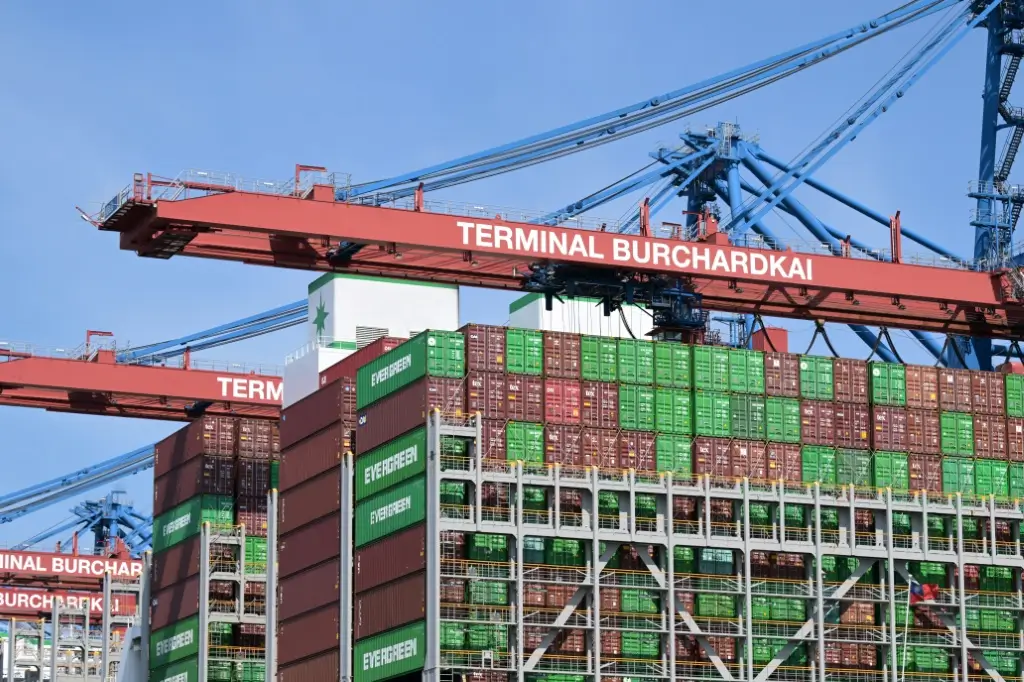
The German economy contracted marginally in the second quarter of 2025, as gross domestic product (GDP) fell by 0.1% compared to the previous quarter, according to preliminary figures released by the Federal Statistical Office (Destatis). This follows a revised increase of 0.3% in Q1, slightly down from the earlier estimate of 0.4%. The decline reflects a combination of weakened investment activity and growing pressure from U.S. trade policies, which continue to weigh heavily on Germany’s export-driven economy.
The downturn in Q2 is largely attributed to a drop in gross fixed capital formation in both machinery and construction. Businesses held back on investment, reflecting uncertainty caused by external trade policies, particularly U.S. tariffs under President Donald Trump. Since April, a 10% tariff has applied to almost all U.S. imports, with a steep 27.5% duty on vehicles, directly impacting one of Germany’s core export sectors. A recent EU-U.S. agreement introduced a 15% tariff on most imports from the EU, offering some relief, but the prior uncertainty had already affected export volumes.
The result was a notable slowdown after many companies frontloaded exports in Q1, anticipating tariff hikes. This early-year export surge had temporarily supported growth but created a gap in Q2, as trade momentum softened. Still, household and government final consumption expenditures increased in the second quarter, helping to offset some of the drag from falling investment.
Despite the weak quarterly figure, analysts expect a moderate recovery in the second half of the year, led by increased government spending on infrastructure and defense. Experts from DZ Bank, KfW, and the German Institute for Economic Research highlight improving business sentiment and stronger consumer activity as signs of resilience.
Geraldine Dany-Knedlik emphasized that the German economy has not entered a downturn, but merely lost momentum after a strong start to the year. She and other analysts believe that the recent EU-U.S. tariff agreement provides greater planning certainty and that upcoming government investment will make a "decisive contribution" to economic stabilization.
Dirk Schumacher, chief economist at the KfW development bank, also pointed to the "steady improvement in business sentiment," which he said points to moderate growth in the second half of the year. Analyst Swonke of DZ Bank also expects that higher government spending will provide "an impetus" for the winter half of the year.
Private consumption is also viewed as a key factor in the recovery. Thomas Theobald, an economic expert at the Institute for Macroeconomics and Business Cycle Research (IMK) of the Hans Böckler Foundation, expressed his conviction that the outcome of the recent tariff negotiations between the EU and the US will not stifle the economic recovery in Germany. Private household consumption in Germany is now crucial for determining whether the recovery from autumn 2025 onwards will be muted or dynamic. He pointed to the positive sales trend in retail.
Compared to the same quarter a year earlier, Germany’s GDP was unchanged in real terms (0.0%), but after adjusting for calendar effects, which included one fewer working day, GDP increased by 0.4% year-on-year. This suggests that the underlying trend remains slightly positive despite quarterly fluctuations.
Germany was not alone in its economic challenges. Within the euro area, Ireland (-1.0%) and Italy (-0.1%) also recorded GDP declines in Q2, while Spain (0.7%), Portugal (0.6%), and Estonia (0.5%) posted notable gains, highlighting mixed growth dynamics across the region.
While trade uncertainty has dominated headlines, structural issues within the German economy continue to limit growth potential. Helena Melnikov of the German Chamber of Industry and Commerce called on the federal government to urgently implement legislative reforms after the summer break. She cited bureaucracy, high business costs, and lengthy approval processes as persistent obstacles that must be addressed to unlock growth.
As Germany navigates the second half of 2025, its ability to balance domestic reforms, external trade relations, and fiscal policy will be critical in determining whether the economy can regain a stable upward path.